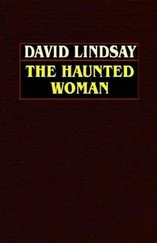Under the necessity of doing things for themselves, people did things for themselves that they had left to the central government for a century. Even during the World War, and in the year or so of stress that followed it, various French Chambers of Commerce had supplemented the deficiency in small change by local token coinages. Now this practice reappeared widely. Today our museums contain hundreds of thousands of specimens of these improvised European coins of lead, nickel, tin and all sorts of alloys, jetons or checks of wood, and tons of signed, printed paper notes, useful in the local market, acceptable for rents and local taxes, but of no avail at all at a distance of a few score miles. The local bank manager as often as not would improvise a local credit system in cooperation with the local solicitor; the doctors would contrive a way of getting along without the Home Office. There were still printers’ establishments in most centres of population, and for some years local periodicals, often of considerable originality, appearing weekly or monthly and printed on the roughest and most variable paper, supplied all that remained alive of the European Press. But their foreign news amounted to little more than rumour. The great Press agencies were bankrupt and dead; the telegraph organization was out of gear.
Save in a few exceptional centres, the diffusion of news by radio died out completely. The manufacture of receiving sets was entirely disorganized. From 1930 to 1970 the “ether” for all except the special purposes of air transport was still. There is a long and interesting study in the Historical Record Series of the vicissitudes of posts, telegraphs and telephones between 1950 and 1980. There seem to have been extraordinary survivals. Apparently London, Paris and Rome were in telephonic communication almost without a break, and the news of the great London landslide was telephoned to Madrid and thence radioed to Buenos Ayres in 1968. But that may have been a revival connected with the new Sea and Air Control.
The disappearance not only of radio sets but of an enormous variety of small conveniences and appliances was extraordinarily rapid after the collapse of world trade. Photography, for instance, was wiped out almost at once. The bicycle became rare, and the old pneumatic tyre was replaced by a thin solid one of often very badly adulterated “remade” rubber. Electric lighting flickered out and vanished for want of the proper material for filaments. All electrical material deteriorated, and tramway systems either fell into complete disuse or returned to horse traction.
Ordinary life had been lowering its standards bit by bit from the World War onward. First one thing went and then another. Neither in the British nor the French provinces did the housing of the common people recover from the cessation of building during the actual warfare. Except in places like Berlin or Vienna where there had been a vigorous outbreak of post-war building which provided accommodation in excess for the shrunken population, the mass of Europeans were even more congested and dirty in their domestic accommodation than they had been before the conflict, though indeed they never sank to the immemorial squalor and poverty of the Chinese and Indian towns. Cleanliness diminished at such a pace as to be noted even by the newspapers after 1933. There are constant complaints of the dirtiness of the streets and the bad repair of the roads, and regretful comparisons with the trim orderliness of twenty years before.
Clothing declined with housing. The clothing trade shrank steadily per head of population for nearly forty years. The city crowds, in spite of the more and more abundant uniforms (until 1950), lost nearly all their former brightness and élan. People patched up their old clothing for want of new, and rags became increasingly common. The supply of boots was very restricted. The mass production of boots had been commandeered at the outbreak of the war and was never turned back to commercial use because of the complete financial ruin that ensued. But the old-fashioned shoemakers had been driven off the face of Europe long before by this mass production, and so throughout the Famished Fifties the Europeans were very painfully shod. Spain had the best boots and France and Britain took to sandals — and chilblains. A certain manufacture of footwear went on in some centre in Bohemia, now untraceable, and next to Spain ranked Central Europe in the order of shoe welfare. There was an extreme scarcity of hats everywhere.
There was also a universal decline in the little comforts and accessories of life to which the world had grown accustomed. Except in a few favoured regions where it was actually grown, tobacco disappeared. The mass production of cigarettes died out, and those who smoked, smoked pipes of substitute. Real tea became a great rarity, and sugar was scarce. Dietetic diseases and diseases of under-nutrition increased.
During the strain and effort of the Great War most of the Europeans had already learnt something of contrivance and makeshift. Now they were to have a decade of domestic management under difficulties. The Germans were already familiar with the word Ersatz; there was much technical knowledge and ability diffused among them; and it is indisputable that they contrived to keep much nearer comfort than the rest of the world during these dismal years. They devised substitute leather, substitute cotton, substitute coffee and tea, substitute tobacco, substitute quinine and opium, and a very respectable list of other substitute drugs.
At the other extreme were the shiftless Irish. Until the return of production their physical misery was very great indeed. One observer doubted if there were a million yards of new cloth produced in that country between 1950 and 1960. “They live,” he reported, “on buttermilk, potatoes, whisky and political excitement. They have contrived garments of woven straw, often very picturesquely dyed, which they call Early Erse and of which they boast inordinately, and they warm themselves by means of fires of peat and dung and a great warmth of mutual invective.” This sounds quite barbaric. Yet it is to this period that we owe the graceful — though, according to a recent Historical Documents report, rather rickety — Church of the Atonement, built on the site of the Dublin Royal College of Science after that had been suppressed by the Censorship of 1939 for “teaching biology in a manner tending to disintegrate the Holy Trinity”.
The student must be more or less familiar with the representations of this period in that useful compilation Historical Scenes in a Hundred Volumes, and he has probably read a number of romances and stories of this time. Actual photographs are least abundant in the later fifties and early sixties. There were still plenty of cameras in the world, but the supply of films seems to have died out after 1955, and there are hardly any but slow wet-plate exposures after that time for nearly ten years. We get only a few score of such animated snapshots as were abundant during the preceding decades, and there are no European cinematograph films at all. Neither was there much sketching except of single figures, and so the editors have had to supplement their material by very carefully studied drawings and photographed restorations made at a later date.
There are six interesting snapshots of scenes in Lyons in 1959. Someone seems to have found a spool of film and been able to develop it. One shows the big central square, the Place Bellecour as it was called, on a market day. Earlier pictures show a big bronze equestrian figure of Louis XIV, but this had already disappeared, probably it had been melted for its metal; and the windows of some of the big buildings, formerly hotels and hospitals, in the background have the empty frameless look of gutted houses. But the scene is quite a busy one. It was probably the monthly market, and there is a considerable amount of cattle, numerous horses being traded, hurdled sheep, many goats and a row of pig-pens. The people are mostly peasants wearing straw hats and either very old coats or in some cases shawls wrapped about them. Townspeople are still wearing the clothing of the ‘thirties, shabby and patched, and there are three market officials or magistrates in the old-world top hat. In the foreground a bearded man leads a couple of oxen harnessed to a small “runabout” car in which a corpulent woman sits in front with a crate of ducklings while behind is a netted calf. The lady smiles broadly at the camera, unaware that she is smiling at posterity.
Читать дальше











